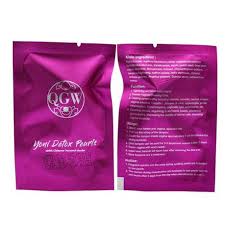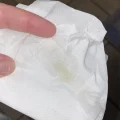Vaginal health is an important part of a woman’s overall health. Vaginal problems can affect your fertility, desire for sex and ability to reach orgasm. Ongoing vaginal health issues can also cause stress or relationship problems and impact your self-confidence. Know the signs and symptoms of vaginal problems and what you can do to protect your vaginal health.
What are yoni pearls?
Yoni pearls are usually advertised as a vaginal detox or vaginal cleanse. They contain multiple herbs wrapped in small mesh cloth “gems” or “pearls.” People use them by inserting them into the vagina, sometimes for over 24 hours. People who sell yoni pearls claim that they treat a variety of health concerns. These include “toxin buildup” from menstrual products or past sexual partners, yeast infections, bacterial vaginosis (BV), and even fibroids and cysts. Unfortunately, the truth is a bit more complicated.
According to Teen health, trying to change your natural vaginal environment will probably lead to more harm than good. Vaginas naturally have some bacteria in them—and this is a good thing! This bacteria actually protects your vagina from harmful infections and balances the pH.
When you try to “detox” your vagina (like with yoni pearls or vaginal douches), you’re killing this good bacteria. This eliminates your body’s natural defenses and throws your vagina’s bacterial balance out of whack.
Are yoni pearls safe?
No. Leaving things in your vagina for long periods of time is dangerous. Bacteria can build up on the objects, leading to a rare but very dangerous medical condition called Toxic Shock Syndrome (TSS). You’ve probably been warned not to leave a tampon in for more than 8 hours because it could lead to TSS. But people selling yoni pearls recommend leaving them in for 24-72 hours, which is way longer! This is dangerous and could possibly lead to not only TSS, but also pelvic inflammatory disease (PID). Plus, the roughness of the mesh cloth might scratch your vaginal wall (ouch!) and could lead to chronic irritation.
I’ve seen the photos of the discharge after using the pearls. Isn’t that a sign that they work?
Unfortunately, no. In the photo testimonies for yoni pearls, the thick grey discharge is labeled as a sign that it worked. But in reality, foul-smelling discharge that’s green, grey or yellow can be a sign of an infection. It’s not a sign that the yoni pearls worked, but that they irritated your vagina and may have even led to an infection.
The yoni pearl’s mesh cloth can introduce new bacteria to your vagina. As the yoni pearl sits in your vagina, the new and old bacteria grow. Vaginal discharge may build up. This can cause extra discharge and a foul smell. (If you’ve ever forgotten to take out a tampon for a day or two, you know what we’re talking about.) It can also lead to TSS or PID, as we mentioned above.
Another common side effect is cramping. When there’s something inside your vagina or uterus that your body thinks shouldn’t be there, the uterus contracts and tries to push it out. This is similar to a period, when the uterus is pushing out the blood and tissue. These contractions can cause painful cramps. So, when you leave a yoni pearl inside your vagina for a long time, you may experience cramps as your body tries to push out the yoni pearl.
I did my research and the herbs in the ingredients have medicinal uses. What’s the difference?
Natural herbs have been used as medicines for years. Even today, many primary ingredients in medications are made from plants and herbs. However, just because they work when they’re swallowed or applied in skin creams (in specific, controlled doses) does NOT mean that they’re safe or effective when used in other ways (like inside your vagina). Plus, yoni pearls have not been approved by the FDA. This means that we can’t be completely sure what’s actually in them.
I’m still concerned about my vaginal health. What should I do?
If you’re worried about your vaginal health, talk to a health care provider. They can answer any questions you have about what’s normal and what’s not, and let you know if there’s anything you should be concerned about. The power of the vagina is in its self-cleansing ability, you do not have to help it, it is powerful enough to help itself.
How to Maintain a healthy Vagina
Protect Vaginal PH Balance Without Douching
Normally, vaginal pH is about 3.8 to 4.5, but douching can interfere with the vagina’s pH levels, reducing acidity and disrupting a healthy vaginal biome — the bacterial makeup of your vagina — and setting the stage for bacterial infections. If your vagina has a strong or unpleasant odor, see your doctor; a douche will only cover up the smell without curing the problem that’s causing it. Avoid using harsh soaps or cleansers on the vulva or inside the vagina, as these also can affect a healthy pH balance.
Maintain a Healthy Diet for Vaginal Health
You may not realize it, but following a balanced, nutritious diet and drinking plenty of fluids are both key to vaginal and reproductive health. In fact, certain foods may be effective in treating vaginal health problems. Yogurt can potentially help prevent yeast infections and aid in their treatment.
Practice Safe Sex to Keep Harmful Germs Away
Using condoms — either the male or female kind — during sex helps to protect against sexually transmitted infections (STIs), such as HIV, genital herpes, syphilis, gonorrhea, genital warts, and chlamydia. Some of these, like HIV and genital herpes, have no cure. And others, like the human papillomavirus (HPV) that causes genital warts, are known to cause cancer.
See Your Gynecologist — or Primary Care Doctor — for Preventive Care
Having regular gynecological exams is crucial to maintaining your vaginal health. The American Congress of Obstetricians and Gynecologists recommends women have their first screening gynecologic exam at age 21. It is also recommended that women undergo Pap smears starting at age 21 to screen for changes in vaginal cells that might indicate the presence of cancer. Gynecologists and many primary care physicians are trained to diagnose diseases and disorders that can harm the vagina or your reproductive system as a whole.
Treat Infections When They Arise
Three types of vaginal infections are common: yeast infection, bacterial vaginosis, and trichomoniasis. If you’re prone to yeast infections and you recognize the symptoms, it’s okay to self-treat with an over-the-counter” medication, but if the symptoms don’t go away, then you need to be seen as soon as possible.”
Use Enough Lubricant, but Not Petroleum Jelly
Lubrication is an important part of intercourse. Without it, the skin of the labia and vagina can become irritated and chafed. While vaginal lubrication usually occurs naturally during female arousal, some women do not produce enough natural lubricant. In this case, they should use an artificial lubricant to reduce friction and to enhance pleasure.
Choose Clothing Carefully to Stay Dry
Your vagina should stay clean and dry — and what you wear can affect that. Certain types of fabrics and tight-fitting clothing create warm, moist conditions in which yeast thrive. Wear breathable cotton underwear and avoid thongs. If you’re prone to yeast infections, change out of wet swimsuits and sweaty workout clothes as quickly as possible. SEE: Are There Any Side Effects of Abstinence in Females





